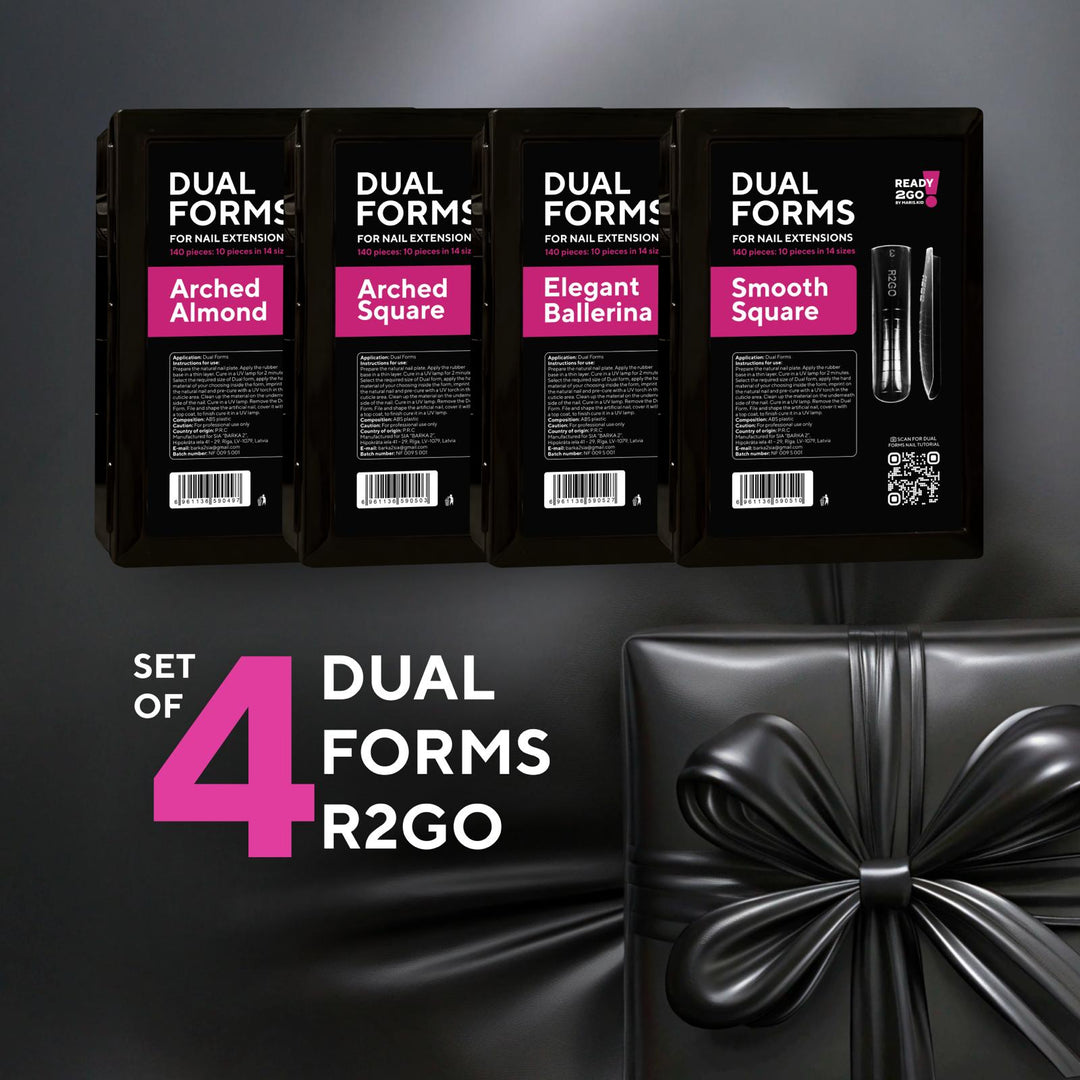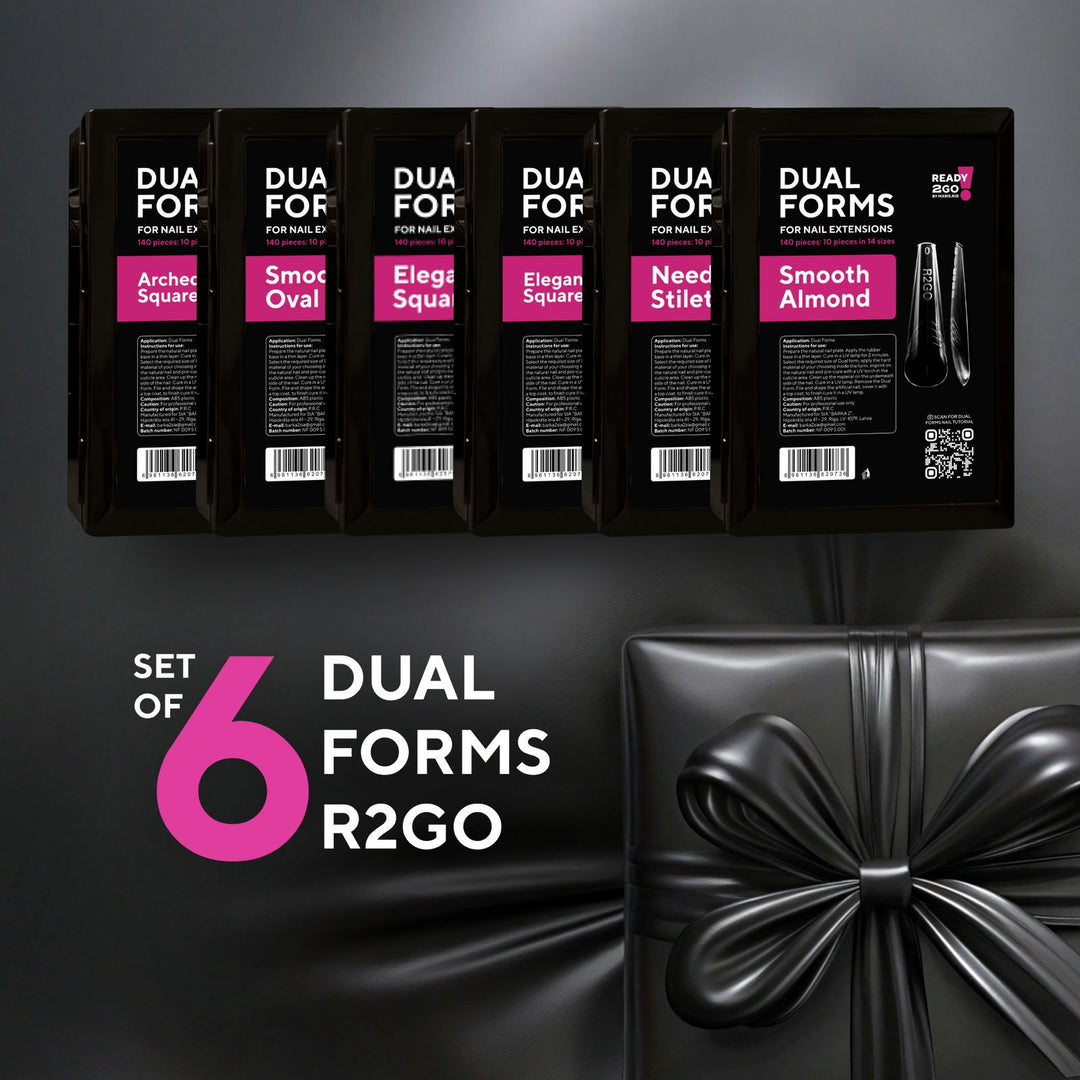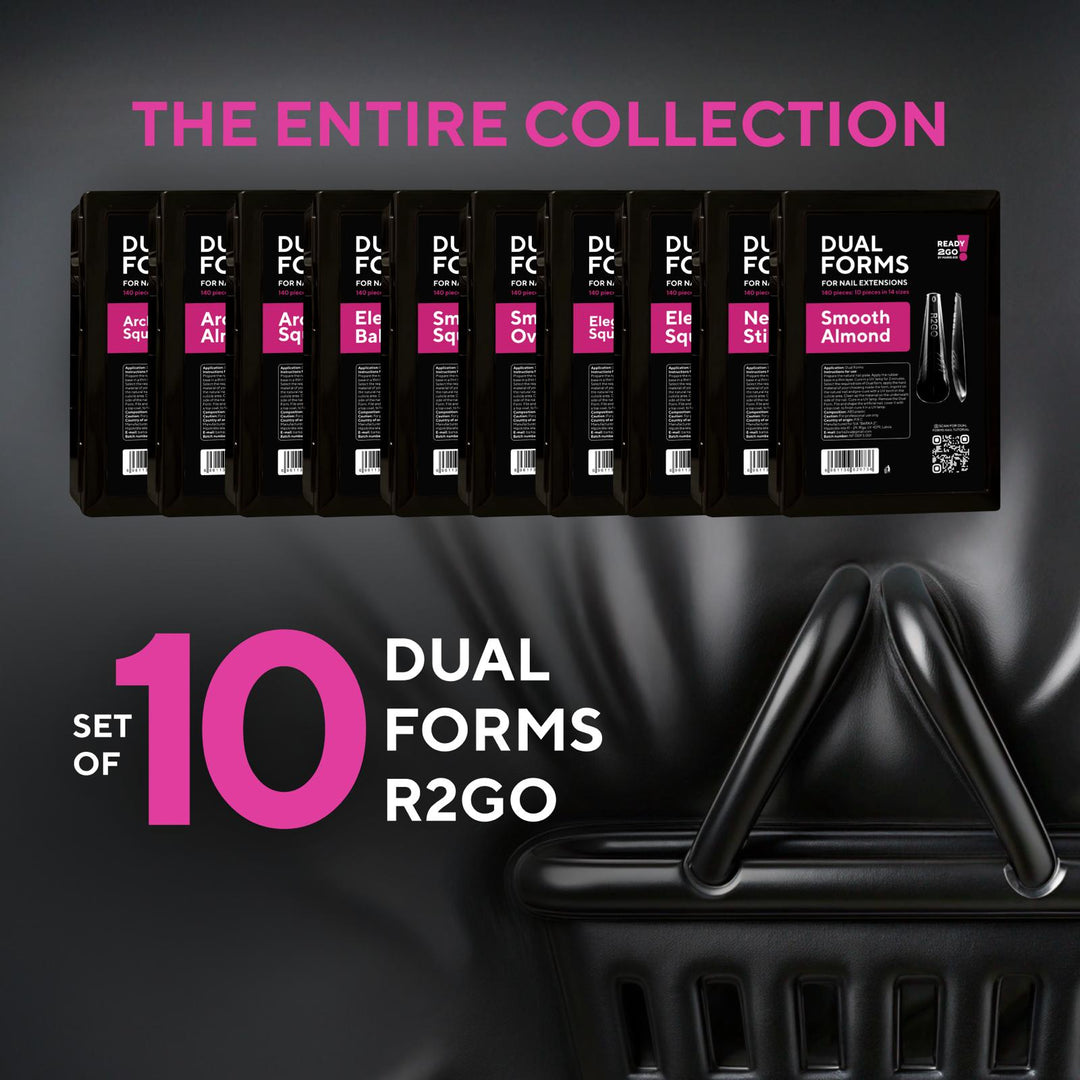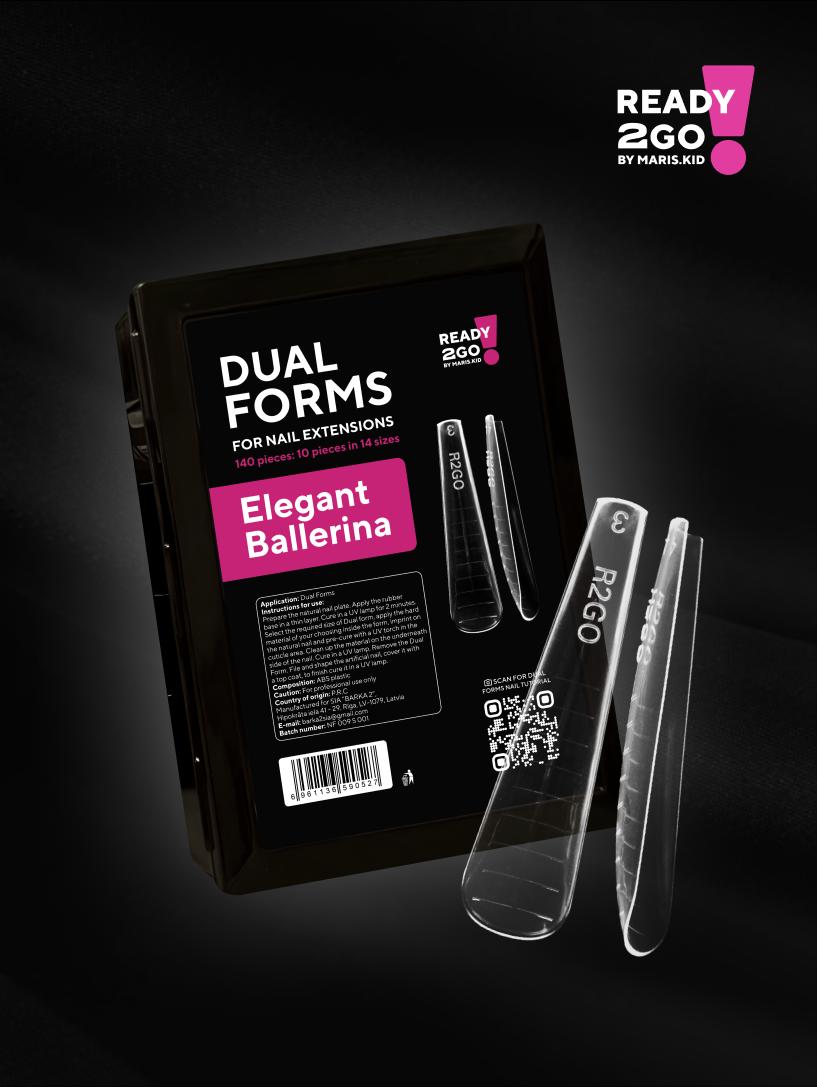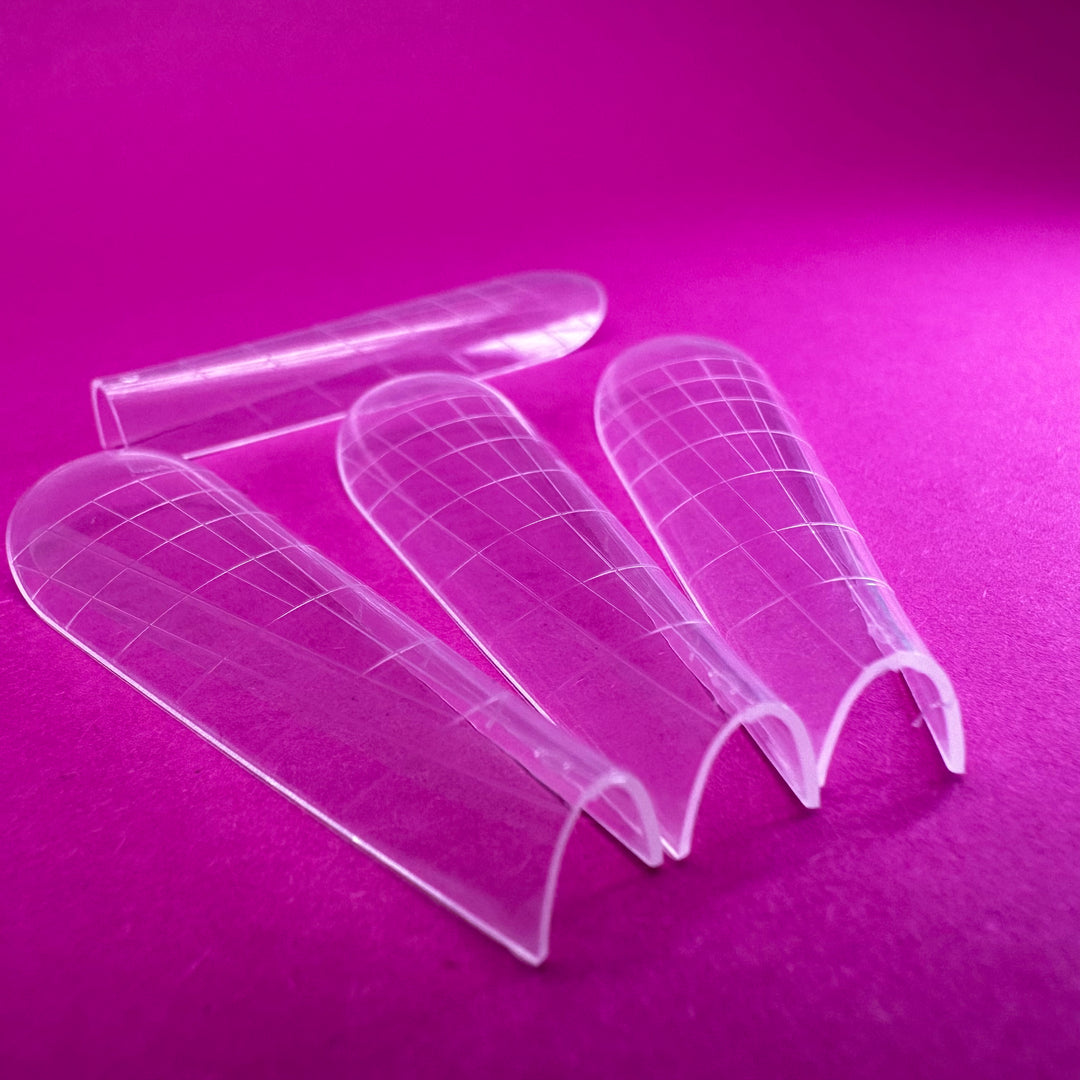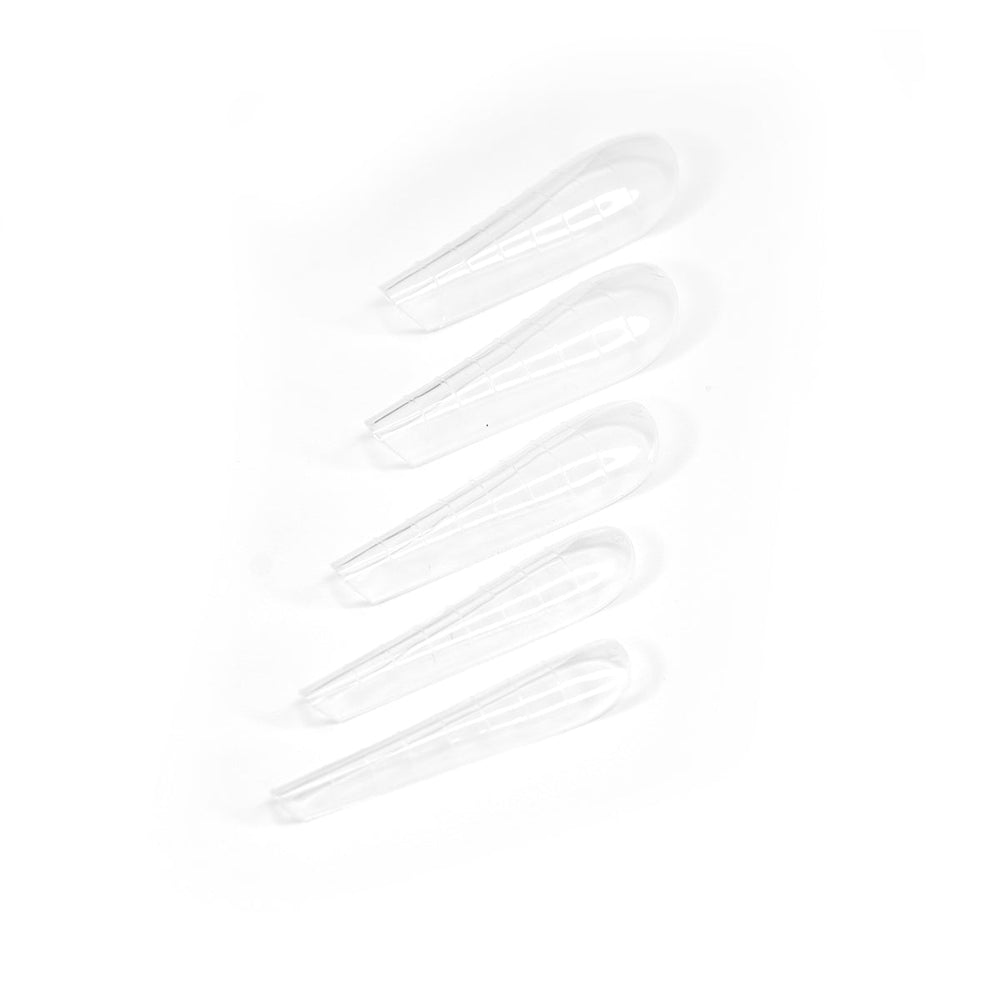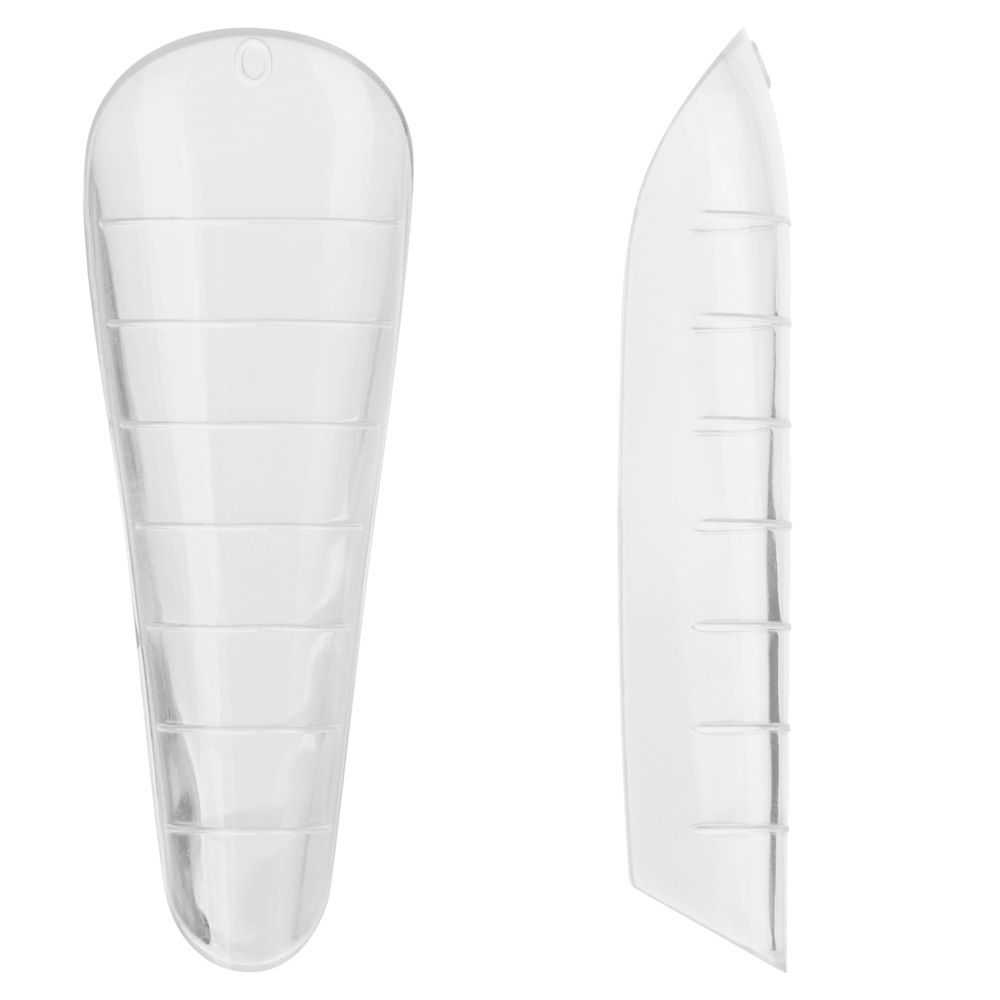
Dual Tips
🌟 Revolutionary Reusable Nail Forms 🌟
Unlike traditional extensions, these forms are applied inside the nail base and pressed on, allowing endless reuse until they lose shape.
✅ Advantages:
-
Reusable & durable.
-
Simplify nail shaping.
-
Reduces material layers and application time.
-
Compatible with gel, acrylic, and polygel.
-
Build artificial plates even on short nails.
📝 Usage Guide:
-
Prep: Clean, shape, and degrease nails. Ensure products/form sizes match your natural nail.
-
Apply: Spread material thinly inside the form, press firmly, and remove excess before curing.
-
Choose Wisely:
-
Almond-shaped nails: Use forms or tips.
-
Wide/trapezoidal nails: Opt for templates for full coverage.
-
Very short nails: Tips are ideal.
-




